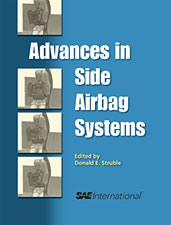Technical Paper
Validation of the PC-Crash Single-Track Vehicle Driver Model for Simulating Motorcycle Motion
2024-04-09
2024-01-2475
The introduction of this model eliminated prior limitations that PC-Crash had for simulating motorcycle motion. Within PC-Crash, a user-defined path can be established for a motorcycle, and the software will generate motion consistent with the user-defined path (within the limits of friction and stability) and calculate the motorcycle lean (roll) generated by following that path at the prescribed speed, braking, or acceleration levels. ...However, the model again did not utilize counter-steering to generate lean, and so it is unlikely that the steering inputs generated by PC-Crash would match the real-world steering inputs. Still, the PC-Crash single-track driver model will yield results that are typically adequate for a crash reconstruction or visualization. ...This paper validates the single-track vehicle driver model available in PC-Crash simulation software. The model is tested, and its limitations are described. The introduction of this model eliminated prior limitations that PC-Crash had for simulating motorcycle motion.

